Our Aim
To provide you with an overview on New And existing technologies, hopefully helping you understand the changes in the technology. Together with the overviews we hope to bring topical issues to light from a series of independent reviewers saving you the time And hassle of fact finding over the web.
We will over time provide you with quality content which you can browse and subscribe to at your leisure.
TekSpek 's

Intel 11th Gen processors
Date issued:
Today, Intel releases 11th Gen Core processors for desktop computers. 19 chips will provide the bedrock for the vast majority of PC systems purchased this year so the release is a big deal.
It is common in the PC space for Intel to release a new microarchitecture one year and follow that up with optimisations a year or so later. 11th Gen Core, codenamed Rocket Lake-S, represents new architectures for both the CPU and integrated graphics parts of the chip.
New CPU cores
The primary aim for the 11th Gen Core CPU is to increase the amount of processing achieved at a particular speed. Known in the industry as instructions-per-clock-cycle (IPC), Intel boosts this metric by approximately 20 per cent, core for core, compared to 10th Gen chips known to the enthusiast community as Comet Lake-S.
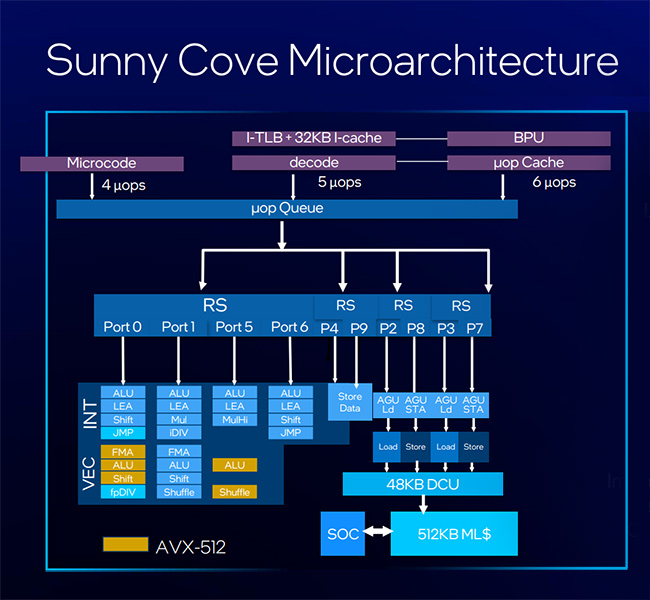
Intel does this by adopting what it calls the Sunny Cove microarchitecture, and it achieves higher IPC through substantial improvements in three key areas. At a very high level, it carries more performance-enhancing memory cache, is a wider design enabling more concurrent processing, and also improves the way in which software code is funnelled into the processor. For the first time in a desktop PC environment, Intel also adds AVX-512 instructions. Run on optimised software, AVX-512 enables the chip to significantly speed up tasks such as inferencing, which is commonly used in accelerating artificial intelligence.
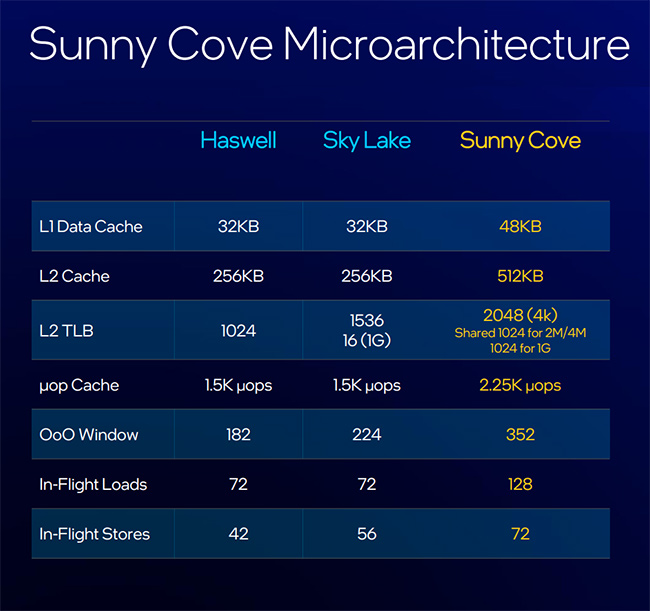
Peeking further under the hood shows how Intel has bulked-up this new core compared to the two previous generations. Imagine Sunny Cove to have a larger, more-efficient engine than either Skylake or Haswell, thus propelling performance higher even though frequency may not increase.
The downside to a more muscular CPU design is that each core naturally occupies more precious silicon space. This is normal for one generation to the next and is usually accompanied by switching to a smaller manufacturing process, enabling more transistors to fit into a given space. Intel, however, has been beset with manufacturing delays and has had to use a 14nm process for many years. These Rocket Lake-S chips still use that process, in its most advanced form, whereas rival AMD has been operating with space- and energy-saving 7nm for a while.
The upshot of this is not trivial. Intel's forced decision to use older manufacturing technology means that, for the first time ever, it has fewer CPU cores than on the previous generation. 10th Gen Core has a maximum of 10 cores and 20 threads while 11th Gen makes do with eight cores and 16 threads. Intel counters that increased IPC and frequency will make up for the shortfall in multi-threaded applications, but it is worth knowing that AMD has a 16-core and 32-thread mainstream processor imbued with its own cutting-edge Zen 3 technology.
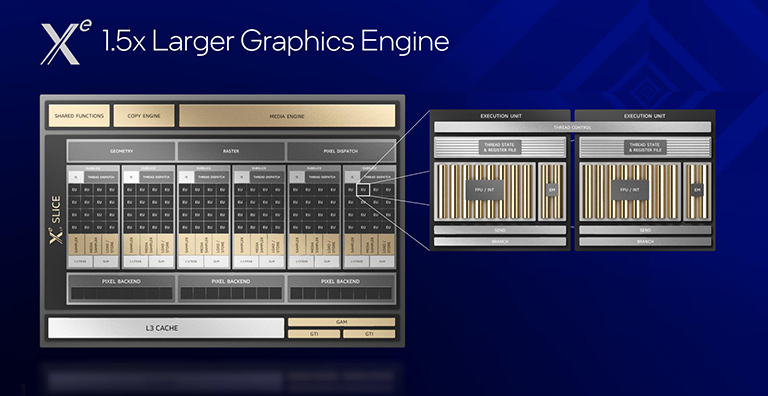
New Graphics
Another reason why Intel has reduced the number of CPU cores rests with the improvements made to integrated graphics. Built on an all-new architecture known as Xe, the majority of 11th Gen Core chips house this improved IGP. Carrying up to 32 execution units and also offering improvements to processing, video acceleration and outputs, Intel says its performance is up to 50 per cent better than the last generation. In terms of branding, the new graphics are known as UHD 750 Graphics, up from the UHD 630 Graphics on 10th Gen Core.
Don't be fooled into thinking they can play the latest games at decent resolutions and image quality; they can't. You will still need a discrete graphics card for that purpose, but as a means to enable solid multimedia capabilities for mid-priced PCs, they more than fit the bill.
General Improvements
11th Gen Core chips also feature a couple of noteworthy upgrades from their predecessors. Like 10th Gen, each chip has a PCIe x16 connection hardwired from the processor to the motherboard. Intel doubles the transfer speed by moving from a Gen 3 to Gen 4 conduit, though in fairness AMD has been using Gen 4 for a while. Further, Intel adds a specific Gen 4 x4 link to the new chips, solely to pave the way for attaching a super-fast M.2 storage drive - a feature which isn't available on 10th Gen. New chips also have a revised memory controller capable of running at higher speeds, with Intel offering native DDR4-3200 support, up from DDR4-2933.
Even with these changes, Intel keeps to the LGA1200 socket first seen on 10th Gen chips. This means you can run 11th Gen in most 10th Gen-optimised boards, and vice versa, though not all features may be present or work correctly. The optimum combination is to pair an 11th Gen with a Z590 motherboard, which brings its own set of improvements, including faster USB support, a double-speed link between CPU and chipset, and enhanced WiFi and networking.
Models and Performance
The 19 new chips span the Core i5, Core i7 and Core i9 families, and Intel hasn't announced any budget Core i3 processors yet. As is the norm for the company, each family has a number of processors differentiated on speeds, power and whether they carry integrated graphics.
Like the 10th Gen, each chip has hyperthreading support by default. Core i9 and Core i7 share the same 8C16T topology and are split by frequency above all else. Though the Core i9-11900K is the halo product, there's considerably more value to be had by opting for the Core i7 range, particularly something like the Core i7-11700, priced at $323.
Whilst Intel will play second fiddle to AMD at the top end of the stack - because it has fewer cores and threads - what the Core i5 and Core i7 lack in outright performance leadership is compensated for by keen pricing. It's hard to rival AMD to compete against a 6C12T Core i5 priced from $157, particularly when accompanying motherboards also tend to be cheaper from Intel than AMD.
Most enthusiasts, however, will still gravitate to the best-in-breed processors. As such, performance numbers from leading review websites paint a mixed picture.
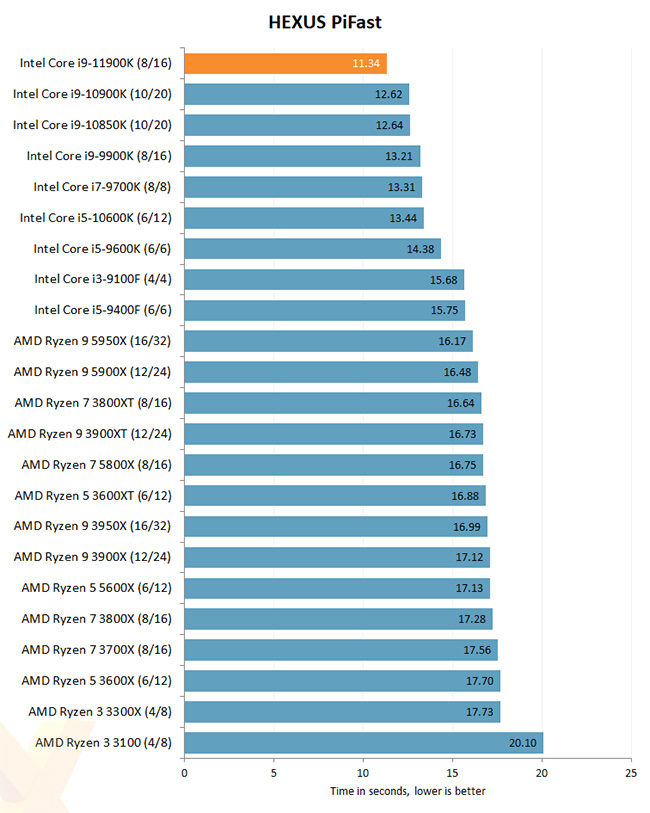
That IPC uplift is evident in light-load applications such as PiFast, which is a good proxy for how the processor will deal with everyday work. Intel already held the lead in this arena, and it is further solidified with 11th Gen Core.
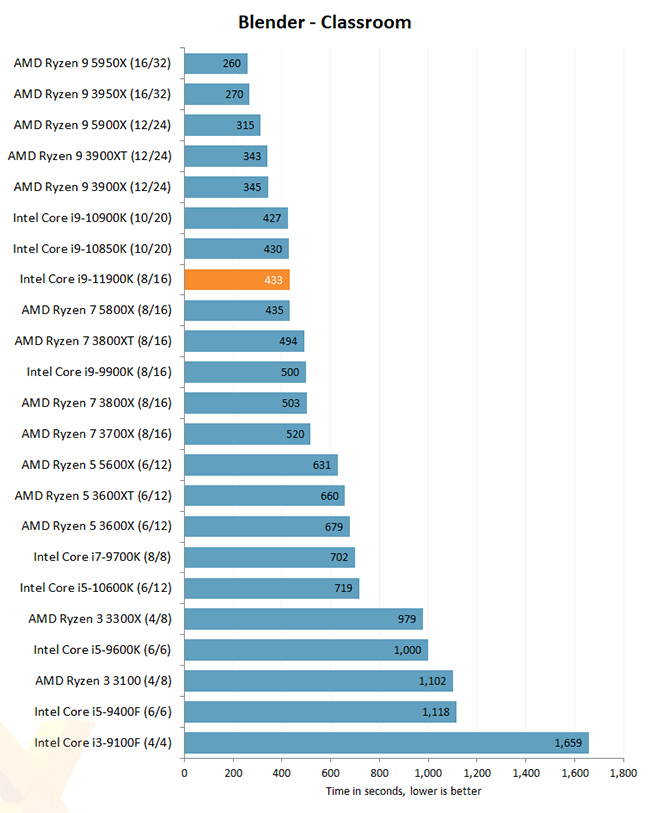
Enthusiasts looking for all-out performance may be left wanting. The fewer cores and threads on this generation means the top-line Core i9-11900K is actually slower than last year's Core i9-10900K, though not by much. Rival AMD's Ryzen 7 5800X is the same speed and cheaper.
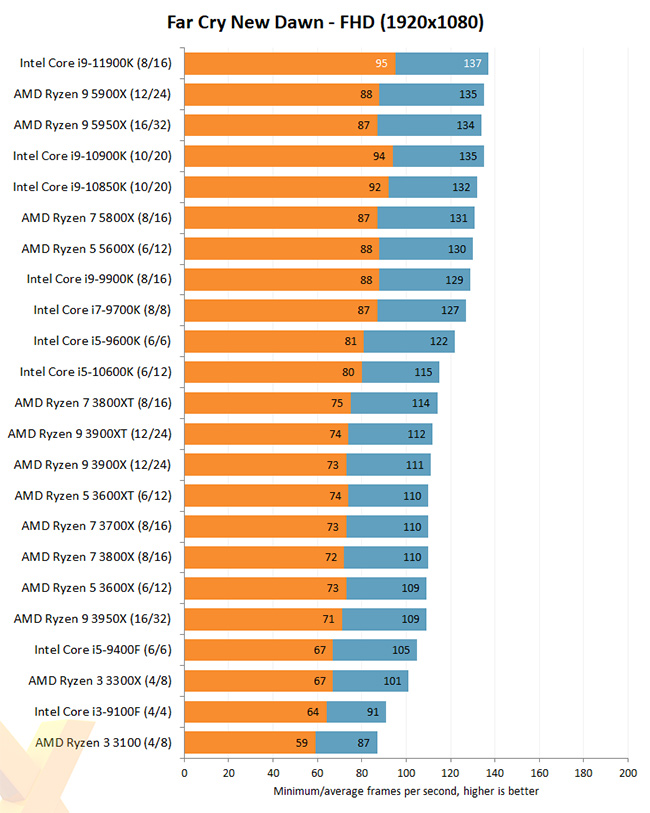
The extra IPC also helps in gaming, mostly at lower resolutions, so 11th Gen Core is a good pick if high-framerate fun is the primary reason to upgrade your PC.
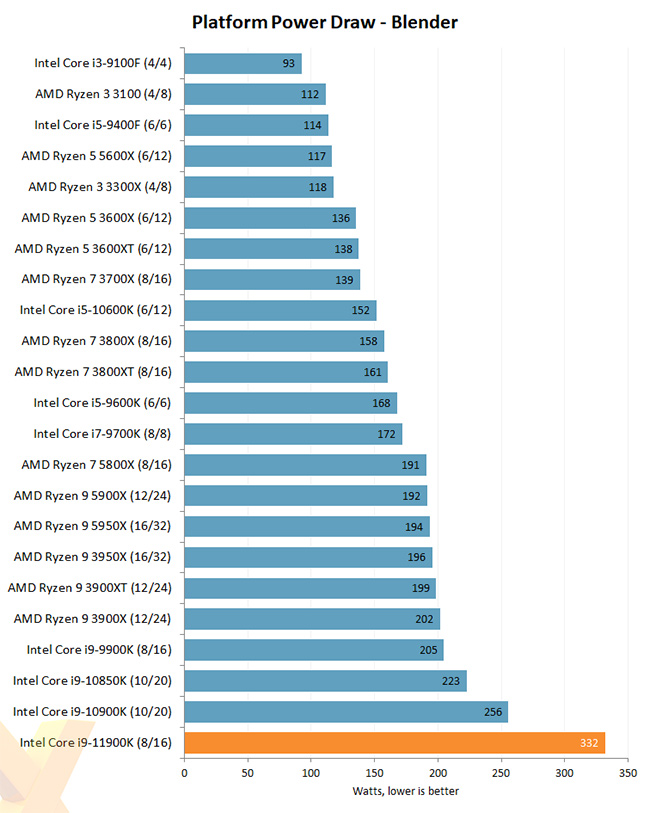
However, the continued use of ageing 14nm process has the undesirable side-effect of spiralling power consumption when the cores are running at full gas. AMD, for example offers the same level of performance at 60 per cent of the power.
The Wrap
Under a year on from the release of 10th Gen, Intel brings to market 19 chips housing 11th Gen Core technology. Offering a more robust feature-set and greater per-core performance via architecture improvements, Intel can't battle AMD at the bleeding edge of performance but does continue to offer a good mix of value and performance through a number of Core i5 and Core i7 processors.
As an overall package, 11th Gen Core is a small but useful step up from 10th Gen. Building a £1,000 to £2,000 PC this summer? It pays to keep 11th Gen Core firmly in mind.
Scan Computers stocks a wide number of Intel 11th Gen Core desktop processors, head on over to the cpu cateogry to view the full range.